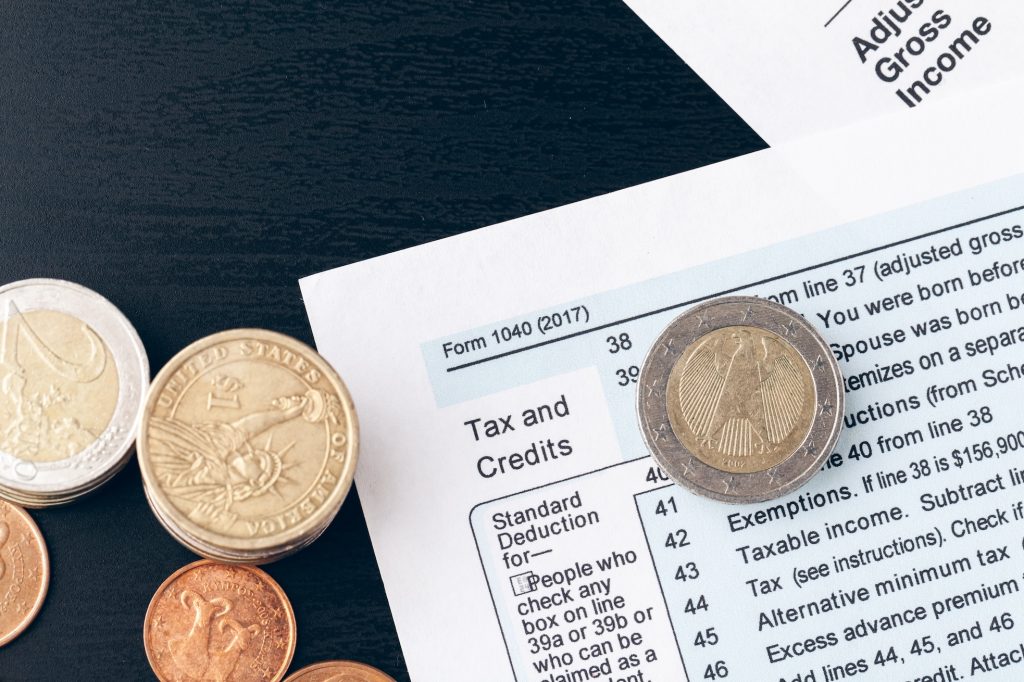Understanding Tax Credits
Tax credits are a powerful tool in your tax strategy arsenal, directly reducing the amount of tax you owe to the government, dollar for dollar. Unlike tax deductions, which lower your taxable income, credits reduce your tax bill, making them highly valuable for taxpayers.
In a Nutshell:
- Tax credits are super valuable because they directly reduce the amount of tax you owe, dollar for dollar.
- Unlike deductions, credits take money straight off your tax bill.
- There are two types of credits: refundable (you can get a refund even if you don’t owe tax) and non-refundable (can only bring your tax bill to zero).
- Popular credits include the Child Tax Credit, Earned Income Tax Credit, and education credits.
- Do your research, use the IRS website, or talk to a tax pro to see which credits you qualify for!
What Are Tax Credits?

Tax credits are amounts that the IRS lets you subtract from your total tax liability. They’re essentially a way to pay less tax, with each credit directly reducing the amount you owe by the credit’s value. Tax credits come in two main types: refundable and non-refundable.
- Refundable Tax Credits: These can give you a refund even if you don’t owe any tax. If the credit is more than what you owe in taxes, you’ll receive the difference as a refund.
- Non-Refundable Tax Credits: These can only reduce your tax bill to zero. You won’t get a refund of the remaining amount if the credit exceeds your tax liability.
Popular Tax Credits: A Quick Overview
| Tax Credit | Purpose | Eligibility Notes |
|---|---|---|
| Child Tax Credit (CTC) | Financial support for families with qualifying children | Income limits, child’s age, and other factors apply |
| Child and Dependent Care Credit | Helps cover childcare costs while you work or look for work | Income limits, eligible expenses, qualifying dependents |
| Earned Income Tax Credit (EITC) | Reduces tax burden (or provides a refund) for low-to-moderate income earners | Income limits, family size, investment income restrictions |
| American Opportunity Tax Credit (AOTC) | Offsets higher education costs for the first four years of college | Income limits, qualified expenses, enrollment requirements |
| Lifetime Learning Credit (LLC) | Supports ongoing education and skill development expenses | Income limits, qualified expenses |
Understanding Popular Tax Credits
Understanding how tax credits function can be a game-changer for your tax strategy. Let’s explore the key credits you should know about in more detail.
Child Tax Credit (CTC)
- Purpose: Provides financial support to families raising children. For the 2023 tax year, the maximum credit is $2,000 per qualifying child.
- Key Factors: Your adjusted gross income (AGI), the number of qualifying children, and their ages are crucial in determining eligibility and the credit amount.
- Income Phase-outs: The CTC begins to phase out for higher-income taxpayers. For example, in 2023, the phase-out begins at $400,000 AGI for married couples filing jointly and $200,000 for other filing statuses.
- Refundability: The CTC is partially refundable. If the credit exceeds your tax liability, you may receive up to $1,500 per qualifying child as a refund.
Child and Dependent Care Credit
- Purpose: Helps offset the costs associated with childcare or care for a disabled dependent, enabling you to work or search for work.
- How It’s Calculated: The credit is a percentage of your eligible care expenses, ranging from 20% to 35%. The percentage you qualify for decreases as your income increases. Additionally, there are limits to the amount of eligible expenses you can claim.
- Eligible dependents: Include children under the age of 13, a spouse who is incapable of self-care, or another dependent who is physically or mentally unable to care for themselves.
Earned Income Tax Credit (EITC)
- Purpose: Designed to provide tax relief and potentially a refund to low- to moderate-income working individuals and families.
- Key Factors: Your earned income, family size, filing status, and investment income all play a role in determining your eligibility and the EITC amount you may receive.
- Potential for Larger Refund: Since the EITC is refundable, you could receive a refund even if you don’t owe any taxes. This makes it a particularly valuable credit for lower-income taxpayers.
- Special Note: The EITC has specific rules for those with qualifying children and those without.
American Opportunity Tax Credit (AOTC)
- Purpose: Offers assistance with qualified higher education expenses during the first four years of college.
- Maximum Credit: Provides a maximum annual credit of $2,500 per eligible student.
- Eligibility Considerations: Income limits, qualified expenses (like tuition, fees, and required course materials), and the student’s enrollment status (at least half-time) all factor into your eligibility.
- Partially Refundable: Up to 40% of the AOTC can be refundable, meaning you may receive a portion of the credit as a refund, even if you don’t owe taxes.
Lifetime Learning Credit (LLC)
- Purpose: Supports continuing education at any stage, including undergraduate, graduate, and professional development courses.
- Maximum Credit: Offers up to $2,000 per year in tax credits.
- Flexibility: A key distinction of the LLC is that it’s not limited to the first four years of higher education. You can use it for ongoing skill development and career advancement.
- Income Phase-outs: The LLC begins to phase out for higher-income taxpayers.
Important Note: These are just a few examples, and there are many other tax credits available. It’s essential to investigate which credits you might qualify for based on your personal circumstances.
How to Claim Tax Credits

Claiming tax credits is essential to maximize their benefits. Here’s a general breakdown of the process:
- Determine Eligibility: Start by researching tax credits you might qualify for, using resources like the IRS website (https://www.irs.gov) or speaking with a tax professional. Key things to consider for eligibility include income level, family size, qualifying expenses, and other factors specific to each credit.
- Gather Documentation: Most tax credits require supporting documentation to verify your claims. This could include:
- Receipts for child care expenses
- Tuition statements for education credits
- Social Security numbers of qualifying dependents
- Forms related to energy-efficient home improvements
- Other documentation specific to the credit you’re claiming
- Complete the Right Forms: Each tax credit usually has a dedicated IRS form that needs to be completed. Find the appropriate forms on the IRS website or in your tax preparation software.
- File Your Tax Return: Include the completed tax credit forms along with your standard tax return. You can file electronically or by mail.
Important Points to Remember:
- Deadlines: Be mindful of filing deadlines; missing them could lead to losing your chance to claim tax credits.
- Software Help: Tax preparation software can simplify the process by guiding you through the available credits and automatically filling out necessary forms.
- Professional Assistance: If you have questions about eligibility or the process itself, consulting a tax professional can give you peace of mind and ensure everything is done correctly.
Beyond the Basics: Other Tax Credits to Consider
While the previously mentioned credits are widely used, several other tax credits could offer you valuable tax savings. Here’s a glimpse into some lesser-known options:
- Saver’s Credit (Retirement Savings Contributions Credit): This encourages low- and moderate-income taxpayers to save for retirement. The amount of the credit depends on adjusted gross income, filing status, and contributions to qualified retirement plans.
- Adoption Credit: This credit helps offset the costs associated with adoption, such as fees, court costs, and travel expenses. Eligibility and credit amounts are based on specific criteria.
- Residential Energy Credits: These credits support using renewable energy sources in your home, offering tax breaks for investments in solar panels, geothermal heat pumps, and other energy-efficient improvements.
- Foreign Tax Credit: This is designed to prevent double taxation if you pay taxes to a foreign country on income earned abroad.
- Health Coverage Tax Credit: This credit helps some eligible taxpayers pay for health insurance premiums.
Maximize Your Refund Potential
Exploring the full range of tax credits available can unlock substantial savings. Don’t hesitate to use the following resources to uncover potential credits:
- IRS Website: The IRS website (https://www.irs.gov) provides a comprehensive list of tax credits with detailed explanations and eligibility requirements.
- Tax Preparation Software: Most software options have built-in features to identify tax credits you may qualify for.
- Tax Advisor: A tax advisor can offer personalized guidance and ensure you don’t overlook any potential tax benefits.
Note: Tax laws and credit availability can change, so it’s crucial to stay updated on the latest information from the IRS website.




